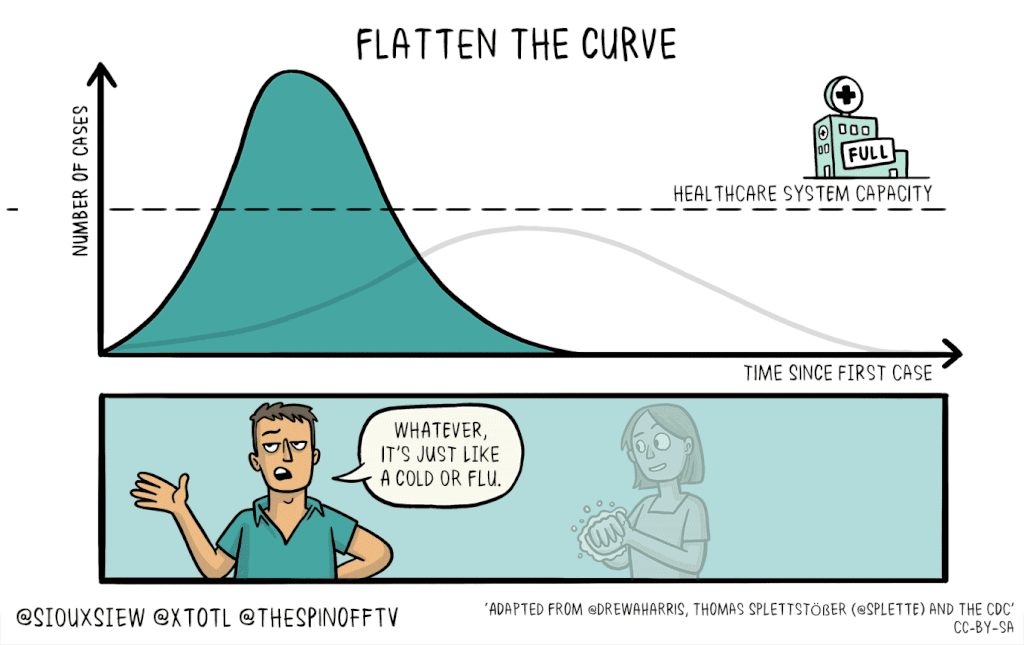Coronavirus, also known as COVID-19, is a contagious virus. Symptoms of COVID-19 include fever, cough, and shortness of breath. The Centers for Disease Control and Prevention (CDC) recommend social distancing to slow the spread of COVID-19.
What is social distancing?
Social distancing is a public health practice. The goal of social distancing is to keep infected people away from healthy people. This will slow the outbreak of the virus. An outbreak is when a large number of people suddenly get sick. If COVID-19 spreads quickly, the outbreak will overwhelm the health system and healthcare workers.
It is especially important to reduce exposure of the virus to high-risk populations. This includes older adults and people who have chronic medical conditions like heart disease, diabetes, and lung disease. They are at higher risk of getting very sick from COVID-19.

IMAGE CREDIT: SIOUXSIE WILES AND TOBY MORRIS / WIKIMEDIA COMMONS
How can I practice social distancing?
To practice social distancing, avoid crowds and mass gatherings. Stay home as much as possible. Consider having groceries, medications, and household items delivered.
When in public, stay six feet away from other people whenever possible. Avoid people who have symptoms of coronavirus. Avoid touching high-touch public surfaces, like handrails. If you must touch a high-touch public surface, use a tissue or your sleeve as a barrier.
Proper handwashing is also important. To wash your hands, use warm water and soap, scrubbing for at least 20 seconds. If warm water and soap are not available, use a hand sanitizer with at least 60% alcohol. Wash your hands whenever you return home, before you eat, and before you spend time with anyone who is part of a high-risk population.
Has social distancing worked before?
History shows the spread of a disease has decreased as social distancing increased. Some cities took steps early into the 1918 Spanish influenza pandemic. Cities that did things like closing schools and banning mass gatherings had lower death rates than those that didn’t.
In more recent history, two cities in China had different outcomes dependant upon the timing of measures. Guangzhou implemented social distancing mandates early in the outbreak. Wuhan began mandates a month into the outbreak. Comparing peak days, Guangzhou experienced lower numbers of coronavirus-related hospitalizations than Wuhan.
What are other ways to limit the spread of disease?
Other public health practices include isolation and quarantine. Isolation is the separation of infected people from healthy people. Isolation may be voluntary or ordered by the government or public health organizations.
People exposed to COVID-19 may be contagious without having symptoms of the virus. Quarantine is the separation of people who have been exposed to the virus but do not have symptoms from those who have not been exposed to the virus. The CDC recommends a 14-day quarantine period for people who have been exposed to COVID-19. Symptoms of the virus may appear two to 14 days after exposure.

